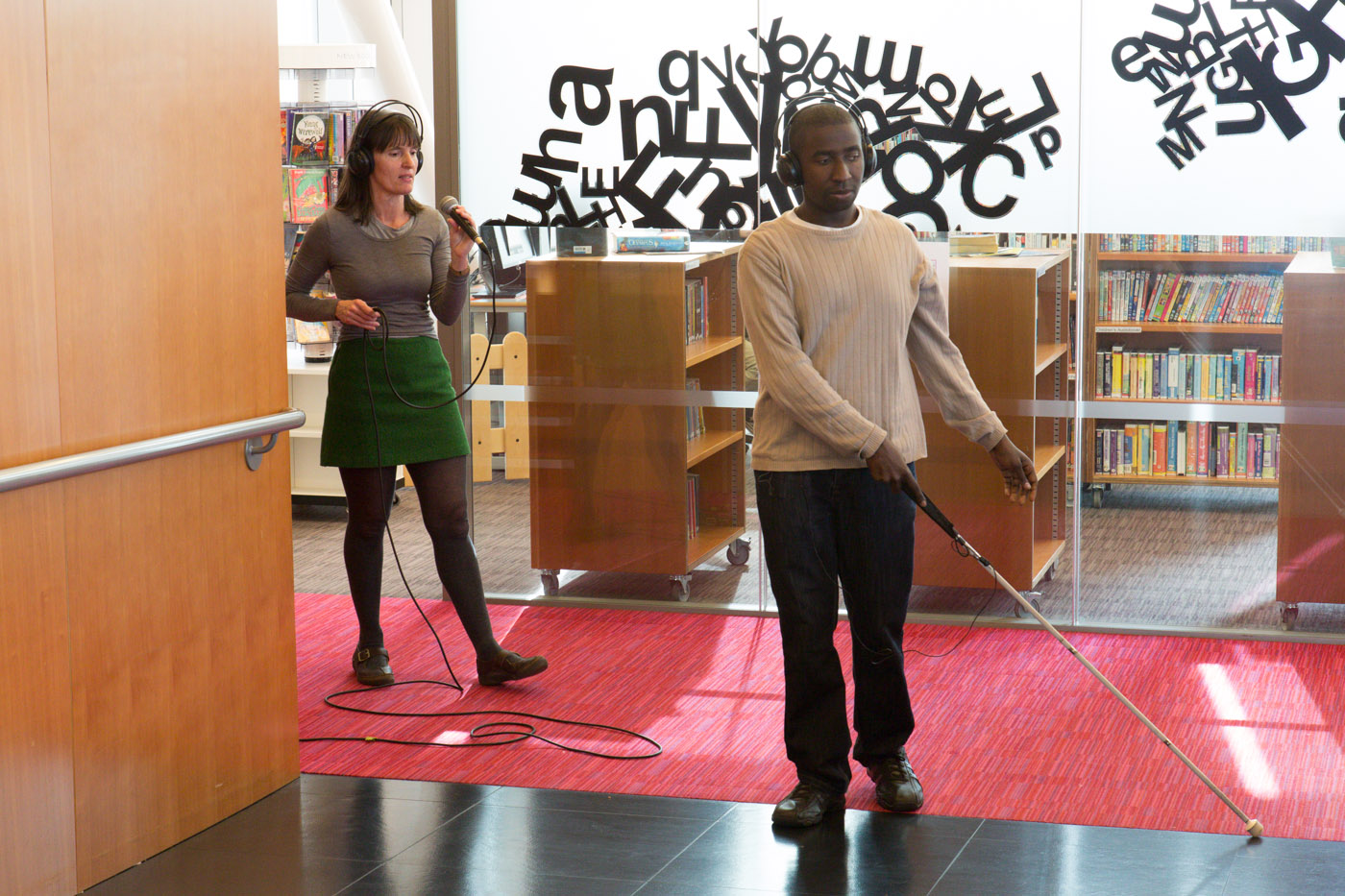Salamanda Tandem aims to nurture and celebrate the deepest resources of human creativity.
Established in 1989, becoming a registered Charity in 2000.
Working across movement, dance, sound, music, voice, live performance, installation and hybrid forms: the work is co-led by Disabled people, seldom heard carers, loved ones and family, peers and friends working in collaboration with education, arts, healthcare, and well-being professionals, where people with lived experience of discrimination are at the heart of the leadership, invention and creation of the work – finding a place on their own terms.
The company is dedicated to an inclusive and various sensory art that supports the realisation of well being and potential.
Beginning with Isabel’s father Lewis Jones, who developed a unique culture, within our family, and with his two brothers, Griff Jones and William Jones known as Bill. All three were Blind from birth and became Deafblind in early adulthood, due to a hereditary condition called Norris disease, that still continues today in our family. When they were young children, Lewis, Bill and Griff, were placed in institutions, the only route to education, as the world only saw disability and discriminated against them. They were isolated from their parents, Welsh culture, language and family. The effects of this discrimination on 3 subsequent generations have been profound. There is another aspect to this too, and this is the growing of Disability culture. As children, and adults, all 3 brothers developed a high level of attunement to their inner world, and the imagination to connect beyond it . As a parent, Lewis taught us through simple puzzles, questions and games, how his mind worked differently, and ours grew differently too, because we also witnessed discrimination to him and towards our whole family. Lewis was a thought leader in creativity, and this extra-ordinary spark for change, created Salamanda Tandem, and a new sensory art form. A community of artists led by the unique culture and creativity of visually impaired, blind, deafblind and blind people, changing the perceptions of sighted artists via collaboration, to become politicised and know how to expand our reach, so there are no barriers to inclusion.
We grew up organically to be the engineers of participation, and developers of socially engaged performance art, committed to the realisation of wellbeing in self and others.
In the first years of Salamanda Tandem, the work could not be conducted in arts, culture, heritage or education buildings, as these were places where disabled people, and seldom heard carers with their loved could not gracefully go. We have knocked on many closed doors, worked in available corridors, lifts, platforms, cupboards, and taped off many a staircase, but the body of our work was grown and devised in institutions, as well as outdoors and in buildings of other kinds – our aim is to in which people can find a place on their own terms.
A huge part of our work has been dedicated to institutional change in the UK: where it was normal for disabled people to be incarcerated, and humiliated with policies like behaviour modification, normalisation, cruel methods and medical practices. This led us into professional education, the training of artists, arts organisations, health care professionals, and into the publication & documentation of our methods and practice. The problems of access, go beyond the physical environment, and education remains paramount to make our unconscious negative biases, conscious, so that we can take judicious and proper action to remove discrimination.
Responding to ever changing environments, there is always a sense of urgency driven by social justice underpinning our work and new sectors where little has been done.
Positive change has happened, and the Equality Act of 2010 now makes discrimination illegal in the UK. However, we see in the effects of war, how disparity occurs immediately. When a building is bombed, what happens then to a disabled person’s hard won mobility, communication and access aids? the long cane, the hearing aid, the wheelchair, all destroyed – no access to a shelter. Across the world, we saw how the Pandemic and its aftermath created huge inequality. Here at home, on top of years of austerity, the immediate closure of arts, education and community buildings, the subsequent loss of infrastructure, and permanent loss of childcare, healthcare services. The socioeconomic inequity, where people’s basic care needs, housing and health are neglected, meant that arts work with people is barely alive. Yet the billion £ wellbeing industry is thriving, but still largely inaccessible. This is something we are working on, particularly in yoga and movement 4 health, as there is an emerging mental health crisis in young children, teenagers and also in our older population. Although our society has greater awareness of discrimination, and making efforts to remove it, exclusion manifests itself in subtle ways, and in reality it is as sharply in focus today as it was back in the 1980’s.
We would like to thank Nottinghamshire County Council, and Arts Council England who have supported us to to play our part since 1994, and through careful policies and funding are transforming the arts from the elite it was, to one of the only places where disenfranchised people have an opportunity to full-fill their potential, through the process of being a creator.
